1. Research Proposal
1.1. Why
1.1.1. A formal step in the research process
1.1.2. To define, refine and focus your research ideas
1.1.3. Shows links between previous research
1.1.4. Best ways to research the problem
1.2. Education is a social science
2. Whats in a Proposal
2.1. Introduction to the Research Question
2.1.1. The introduction to the research question sets the scene and provides background on the topic
2.1.1.1. What is the broad area of inquiry
2.1.1.2. What aspects do you want to know/find out
2.1.1.3. What experience or general sources have informed your interests in this area
2.1.1.4. What specific question you want to investigate in the study
2.2. Overview of Relevant Literature
2.2.1. Summarises key publications
2.2.2. Critically analyse previous studies
2.2.3. Summarise the implications of previous studies
2.2.4. Relate previous studies to the present study
2.2.5. Consider the theoretical perspectives and research methods that have been used in previous studies
2.2.6. Takes up about 1/2 of the proposal
2.2.6.1. For every 10% should be 5 articles
2.2.6.2. 10- 100 articles
2.2.7. Sources
2.2.7.1. Books
2.2.7.2. Journals
2.2.7.3. Individual experts
2.2.7.4. Peer Review
2.3. Explanation of choice of Paradigm
2.3.1. Discuss the researchers 'worldview' that informs how they collect, interpret and report data
2.3.1.1. Paradigms reflects the researchers belief about
2.3.1.1.1. Truth
2.3.1.1.2. Reality
2.3.1.1.3. Knowledge
2.3.2. Some Paradigms in Educational research
2.3.2.1. Positivist
2.3.2.2. Constructivist
2.3.2.3. Interpretive
2.3.2.4. Critical
2.3.2.4.1. Marxist emancipatory
2.3.2.5. Feminist-post structural
2.4. Explanation of Choice of Methodology and research methods
2.4.1. Methodology
2.4.1.1. The underlying theories that inform the research
2.4.1.2. The philosophical assumptions that underlie the study
2.4.1.2.1. Phenomenology
2.4.1.2.2. Postivism
2.4.2. Method refers to:
2.4.2.1. Details a given process or procedure for carrying out the research
2.4.2.2. eg.
2.4.2.2.1. Case study
2.4.2.2.2. Grounded research
2.4.2.2.3. Ethnography
2.4.2.2.4. Action research
2.4.2.2.5. arts-informed
2.4.2.2.6. narrative
2.5. Explanation of general research design
2.5.1. Research Design should include:
2.5.1.1. Description of participants
2.5.1.2. Data collection procedures
2.5.1.3. Reliability, validity and trustworthiness
2.5.1.4. How data will be analysed and reported
2.6. Description of participants
2.6.1. Who
2.6.1.1. Description
2.6.1.2. Quantitative studies will talk about a population
2.6.1.3. Sources of information
2.6.1.3.1. Documents
2.6.1.3.2. films
2.6.1.3.3. Pictures
2.6.1.3.4. Artefacts
2.6.2. How
2.6.2.1. How will you select and recruit participants
2.6.3. Ethics
2.6.3.1. what ethical considerations will you need to take into account
2.6.4. Will only have 1-2 different interviews
2.6.4.1. 1 hour of interview takes 6 hours to transcribe
2.7. Planned Data Collection Procedure
2.7.1. What data could you collect to answer your research questions
2.7.2. To think about:
2.7.2.1. Procedure to collect data
2.7.2.2. The researchers role in the research
2.7.2.3. Timeline for data collection
2.7.3. Data Collection
2.7.3.1. Interviews and focus groups
2.7.3.1.1. What is the participants experience
2.7.3.1.2. What meanings lie behind observed behaviours or evidence
2.7.3.1.3. Information provided directly from participants
2.7.3.1.4. Structured
2.7.3.2. Observations
2.7.3.2.1. Anecdotal
2.7.3.2.2. Event sequenced
2.7.3.2.3. Time sequenced
2.7.3.3. Documents
2.7.3.3.1. Policies
2.7.3.3.2. Lesson units
2.7.3.3.3. Photos, artworks, drawings, films
2.7.3.3.4. Letters, newspapers archival documents
2.7.3.4. Field Notes
2.7.3.4.1. Journals
2.7.3.4.2. Reflections
2.7.3.5. Interviewing
2.7.3.5.1. Ethics and informed consent
2.7.3.5.2. Researcher effect
2.7.3.5.3. Participant effect
2.7.4. Reliability, validity and trustworthiness
2.7.4.1. Bias
2.7.4.2. Surveys
2.8. Outline of Data analysis and reporting
2.8.1. How will you analyse the data
2.8.1.1. Theory-led, data-led
2.8.1.2. Discourse analysis, semiotic analysis, visual analysis
2.8.1.3. Categorising, coding, memoing, journalling
2.8.2. How will you report the data
2.8.2.1. Commonalities
2.8.2.2. Differences/extremes
2.8.2.3. Links to key literature and prior research
